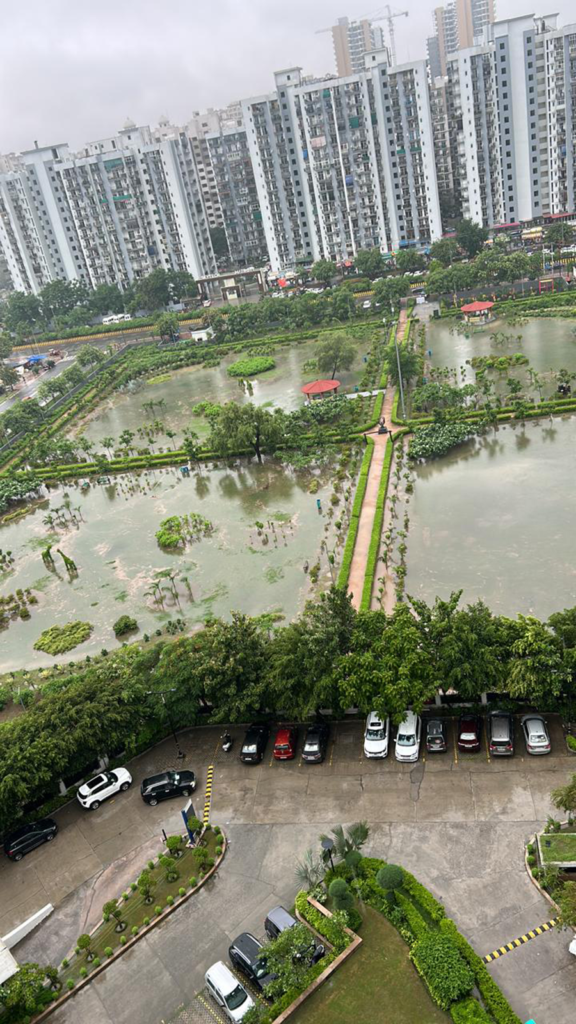The Best Time to Replenish Our Groundwater Resources
There was this campaign on water conservation that started with a background voice, “ek din hamare gaon me koi bathroom shower laga gaya. It showed that a bathroom shower had been
installed in the middle of a desert and people start drinking water from it. And the background voice says, “hamare aadhe gaon ne pani pi liya aur shahar me kisi ka nahana abhi khatam nahi hua tha” The message is hard-hitting.
The point is that we city folk have become oblivious to the grave problem of water shortage due to the convenience at our fingertips, so much so that we cannot even fathom what transpires in other parts of the country or how fortunate we truly are.
Heavy rains and Sector 77 becomes a water park. It appears that there is no proper drainage or rainwater harvesting system. This is the best time when we can replenish our groundwater resources but unfortunately, Noida Authority has no such plans. Rainwater harvesting not only saves water but also saves a lot of inconveniences caused by stagnant water. The alarming fact is that many of us are not even aware that at times half of our water needs are being serviced by boring into groundwater. As we continue to extract more and conserve less, we are drying up groundwater by 5 to 6 feet every year. The average pre-monsoon depth increased from 9.95 metres in 2016 to 25.28 metres in 2020 – a change of 154%. But still, extraction continues unabated.
Nature is our only source of fresh water and rainwater continues to be the largest contributor in replenishing our water bodies and groundwater, thus the urgent need to harvest it. There are many benefits to Rainwater harvesting (RWH), some of them being the reduction of soil erosion caused by the runoff water, prevention of urban flooding due to the collection and storage of rainwater and most important of all the reduction of our over-dependence on groundwater while simultaneously helping increase the groundwater level. At the consumable level, one can use the harvested water for purposes of horticulture, toilet flushing, emergency use such as firefighting, and last but not least, as a backup reservoir.
Although in some places the authorities have made it mandatory for buildings to have RWH this is not enough. As responsible citizens, we must take the initiative and make arrangements for the installation of RWH systems in our houses, societies and offices before it’s too late.
(With inputs from Nisha Rai)

Popular Stories
How To Revive Your Rainwater Harvesting System
The Water Couple’s Journey: From Cleaning Tanks to Complete Water Solutions!
Locals Felling Trees Near Sec A Pkt C
Winning Has Become a Habit for Divya
Is Green Park Heading Towards A Slum
Haphazard Parking, Narrow Walking Space In M Block Market
Recent Stories from Nearby
- Justice Delayed: The Uncertain Fate of CLAT 2025 Test Takers March 29, 2025
- Ladies Of The Sector Make The Perfect Eight March 29, 2025
- Blooming! March 29, 2025
- Time to Meet & Greet March 29, 2025
- Flute Recital March 29, 2025







